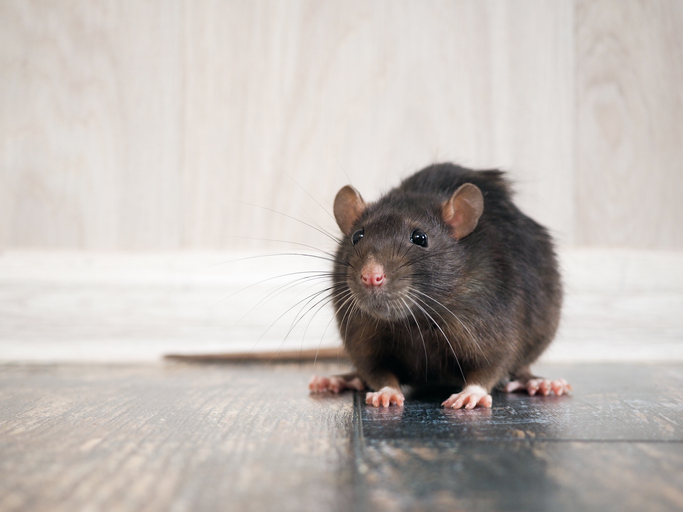Trapping and Removing Rats
How Can I Safely Trap and Remove Rats?
Safely trapping and removing rats involves identifying signs of infestation, choosing the right type of trap (such as snap, electronic, live, or glue traps), placing them strategically in high-activity areas, and baiting them effectively with attractive food like peanut butter or nuts. It’s crucial to handle trapped rats with care, following humane and safe disposal or release methods, and to take preventive measures to avoid future infestations.
Understanding Rat Behavior
Rats can be more than just a nuisance; they pose health risks and can cause significant damage to your home. Understanding how to safely trap and remove these pests is crucial. At Orkin, we specialize in effective and humane rat control solutions. Here’s your comprehensive guide to dealing with a rat infestation.
Before setting traps, it’s important to understand rat behavior. Rats are cautious creatures and can be wary of new objects in their environment. This means that successfully trapping rats often requires patience and strategy.
Look for signs of rat activity such as droppings, gnaw marks, and greasy rub marks along walls. Hearing scratching noises, especially at night, can also indicate their presence.

Save $50
on your first recurring service today with code GET50
Choosing the Right Traps
There are various types of rat traps available, including snap traps, live traps, and glue traps. Each has its advantages and considerations:
- Snap Traps – These are a popular choice due to their effectiveness and immediate results. When a rat triggers the trap, a metal bar snaps down, typically killing it instantly. It’s important to choose a size appropriate for rats, as smaller traps designed for mice won’t be effective.
- Electronic Traps – These traps lure the rat in and deliver a lethal electric shock. They are known for their efficiency and ease of use. Electronic traps can be a humane option as they often result in a quick death.
- Live Traps – If you prefer a non-lethal method, live traps are suitable. These traps capture the rat alive, allowing for release. It’s essential to check these traps frequently to avoid distress and potential health issues for the trapped rat.
- Glue Traps – These traps use a sticky adhesive to hold the rat in place when it attempts to cross the trap. While simple to use, they are considered less humane and can be distressing for the trapped animal.

GET A PERSONALIZED QUOTE
To protect your home from pests, click here for a free pest control estimate. Our Orkin Pros will create a personalized pest treatment plan for your home or business
or Call (866) 249-0292
Safe Placement of Traps
Place traps where rat droppings, gnaw marks, or rub marks are evident. Rats typically run along walls, so placing traps along these paths increases success rates. Rats prefer to move along edges and might avoid traps placed in open areas. Ensure that traps are out of reach of children and pets. This is especially important with snap traps and electronic traps, which can harm curious fingers or paws. Using multiple traps increases the likelihood of capture. Rats are neophobic (fearful of new things), so it may take a few days for them to approach a trap.
Rats are particularly attracted to high-protein foods. Peanut butter, bacon, nuts, or dried fruit are excellent choices. For live traps, use a substantial amount of bait to encourage the rat to enter fully. On snap and electronic traps, ensure the bait is securely fastened. If the bait is too easy to remove, rats may eat it without triggering the trap. If rats are not showing interest in the bait, try changing it. Also, replace any bait that becomes stale or moldy to maintain its attractiveness. When setting bait, try to minimize handling it with bare hands. The scent of humans can deter rats from approaching the trap.
Regular Monitoring and Maintenance
Check traps regularly. A trapped rat should be removed promptly to prevent distress and health risks. If using live traps, release the rat far from human dwellings. Preventing rat infestations is as important as removal. Seal entry points in your home, keep food in sealed containers, and maintain a clean environment to deter rats.
What to Do Once You Trap a Rat
Successfully trapping a rat is only part of the solution. Here’s what to do next, depending on the type of trap used.
If Using a Snap or Electronic Trap
- Safety First – Wear gloves to avoid direct contact with the rat. This protects you from potential diseases.
- Disposal – Carefully remove the rat from the trap. It’s recommended to place the rat in a plastic bag before disposing of it in the trash. Check local regulations for the proper disposal of dead animals.
- Clean the Area – Clean and disinfect the area around the trap. Rats can carry diseases, so it’s important to sanitize any surfaces they may have touched.
- Reset the Trap – If you’re dealing with more than one rat, reset the trap. Clean it if necessary and rebait it.
If Using a Live Trap
- Check the Trap Regularly – Live traps should be checked frequently to ensure that a trapped rat is not suffering.
- Release the Rat – Wear gloves and release the rat in a distant location, far from residential areas. The release site should be in a natural habitat, ideally several miles away from your home.
- Sanitize the Trap – After releasing the rat, clean and disinfect the trap before reusing it.
If Using a Glue Trap
- Approach with Caution – Glue traps can be distressing for the trapped rat. Approach carefully as the rat may try to escape or bite.
- Disposal or Release – For humane reasons, some people prefer to release the rat. Vegetable oil can be gently applied to the rat and the glue to help free it. However, this can be challenging and may not always be successful. Alternatively, the rat can be disposed of in the same manner as with snap traps.
- Clean the Area – As with other traps, clean and disinfect the area around the glue trap.
General Tips
- Avoid Touching the Rat – Always use gloves when handling traps with rats to prevent the risk of disease transmission.
- Check for More Rats – One rat often indicates more. Keep traps set until you’re sure all rats are removed.
- Seek Professional Help if Needed – If you’re uncomfortable handling trapped rats or if the infestation persists, contact Orkin for professional assistance.
When to Call Orkin
While DIY methods can be effective, a severe infestation requires professional help. Orkin’s experts are trained in safe and humane rat removal techniques. We assess the situation, implement a tailored solution, and provide advice on preventing future infestations.
At Orkin, we prioritize your safety and the humane treatment of animals. Our methods align with industry best practices, ensuring effective and responsible rat control.
Frequently Asked Questions
What are the signs of a rat infestation?
Signs include droppings, gnaw marks, rub marks along walls, and scratching noises, especially at night.
What types of rat traps are available?
Common types include snap traps, electronic traps, live traps, and glue traps.
How do I safely place rat traps?
Place traps in areas with signs of rat activity, along walls, and out of reach of children and pets.
What are effective baits for rat traps?
High-protein foods like peanut butter, nuts, or dried fruit are effective.
Is it safe to handle trapped rats?
Always wear gloves when handling traps to avoid direct contact and potential diseases.
How can I prevent future rat infestations?
Seal entry points, store food in sealed containers, and maintain cleanliness.
When should I call a professional for rat removal?
If the infestation is severe or persistent, it’s best to contact professionals like Orkin.
Are DIY rat traps effective for large infestations?
For large infestations, professional help is often more effective and safer.
Conclusion
Successfully trapping and removing rats from your home is a significant step towards reclaiming your space and ensuring the health and safety of your household. However, it’s important to remember that rat control is an ongoing process. After removal, focus on prevention strategies to keep these pests at bay. Regularly inspect your home for potential entry points, maintain cleanliness, and store food securely. If the problem persists or you’re unsure about handling it yourself, don’t hesitate to seek professional assistance. Companies like Orkin specialize in effective and humane pest control solutions, offering peace of mind and expertise. Remember, dealing with a rat infestation is not just about removal; it’s about creating a sustainable, rat-free environment for the long term.

FIND YOUR LOCAL BRANCH
To protect your home from pests, click here for a free pest control estimate. Our Orkin Pros will create a personalized pest treatment plan for your home or business
or Call (866) 249-0292

